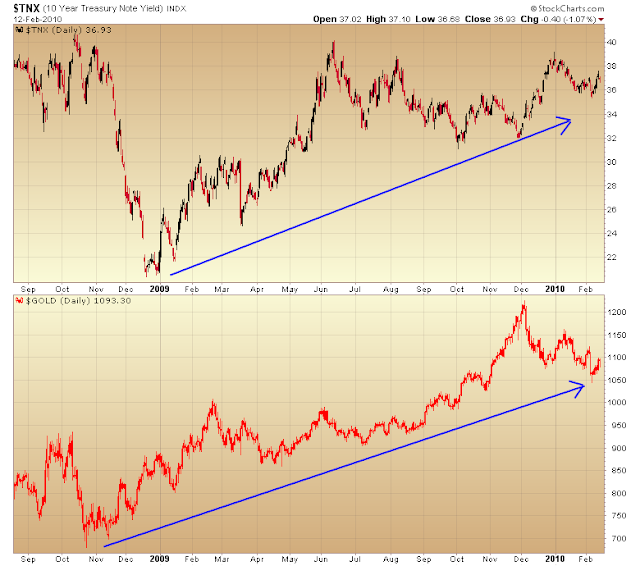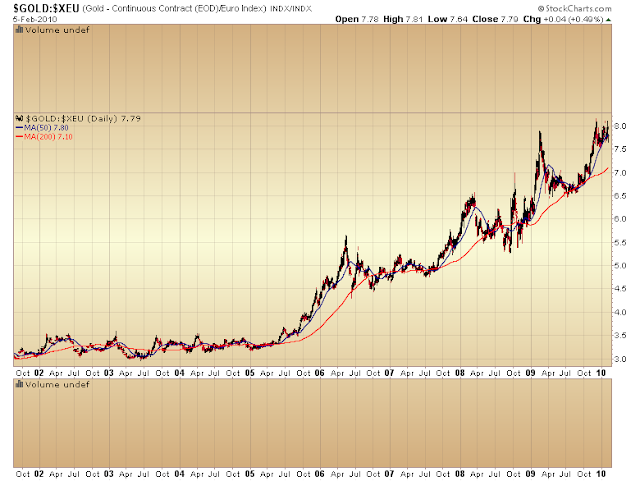A while back I asked the question "Can the markets and the dollar rise together?" They certainly weren't able to do it during the last cyclical bull and they haven't been able to do it so far during this one.
In the next chart you can see that just as soon as the dollar bottomed gold's C-wave ended. The stock market managed to drift a bit higher due to seasonality and momentum, although I will add that the last little spurt higher in December and January occurred as the dollar was correcting into a daily cycle low.
The fate of the markets now rests with the dollar. If Ben can get the dollar headed back down assets will head back up. If not we are going to continue to flounder around until the full forces of the secular bear grab hold of the market again and suck it back down.
The problem is that public opinion has turned against stimulus and printing at the moment. So it's going to be hard to rationalize more printing. (I will add that the government has figured out they can still sneak in more stimulus as long as they don't call it stimulus. Now it's a jobs bill.) If however things start to weaken appreciably public opinion will quickly shift back to "do whatever it takes to fix the problem".
Sooner or later that is going to happen. Of course if we want to see another leg up in the C-wave we need it to happen quickly. Actually because we are running out of positive seasonality (no C-wave has topped later than early May) we probably need to see the dollar top next week.
I'm going to say if we don't put in a weekly swing high on the dollar chart next week then we can probably kiss any more thoughts of a C-wave continuation good bye.
At that point we will just have to twiddle our thumbs for another month or two as we wait for the A-wave to begin.
Flash Crash Ahead
5 hours ago



















































